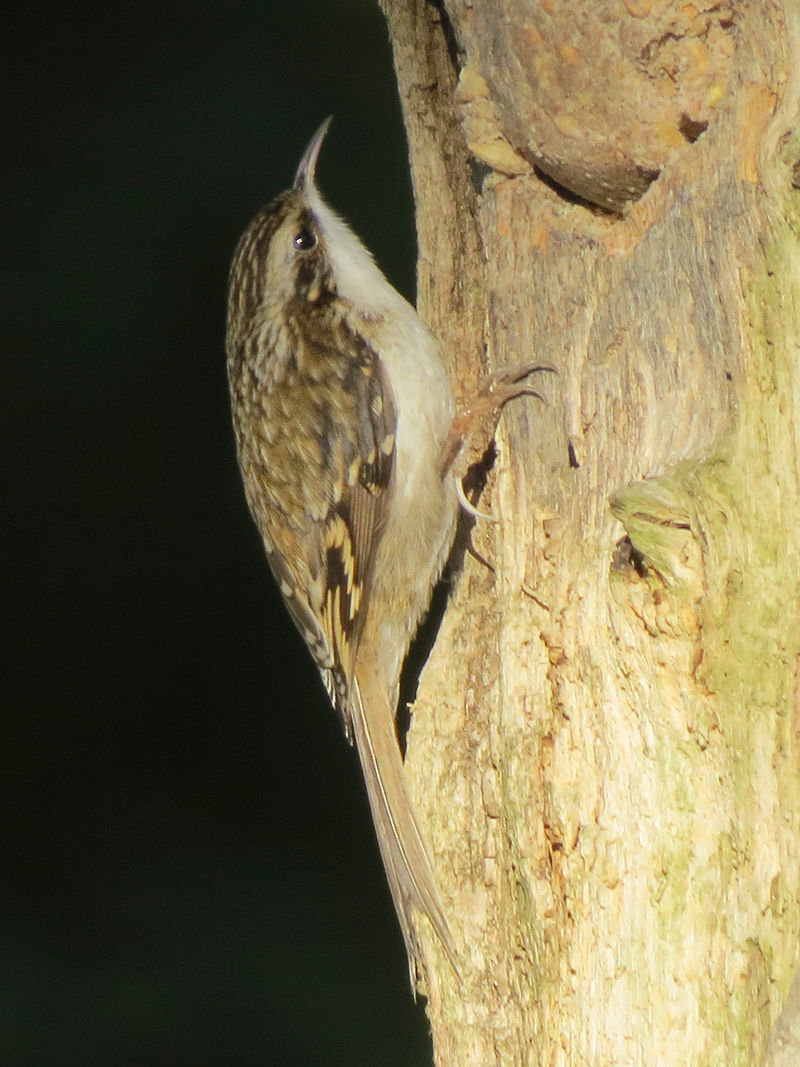
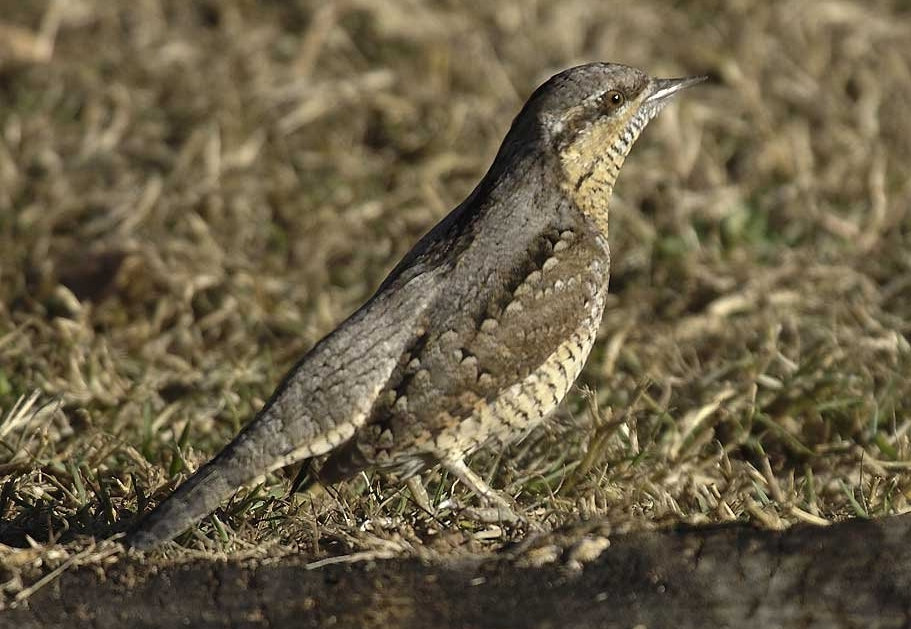
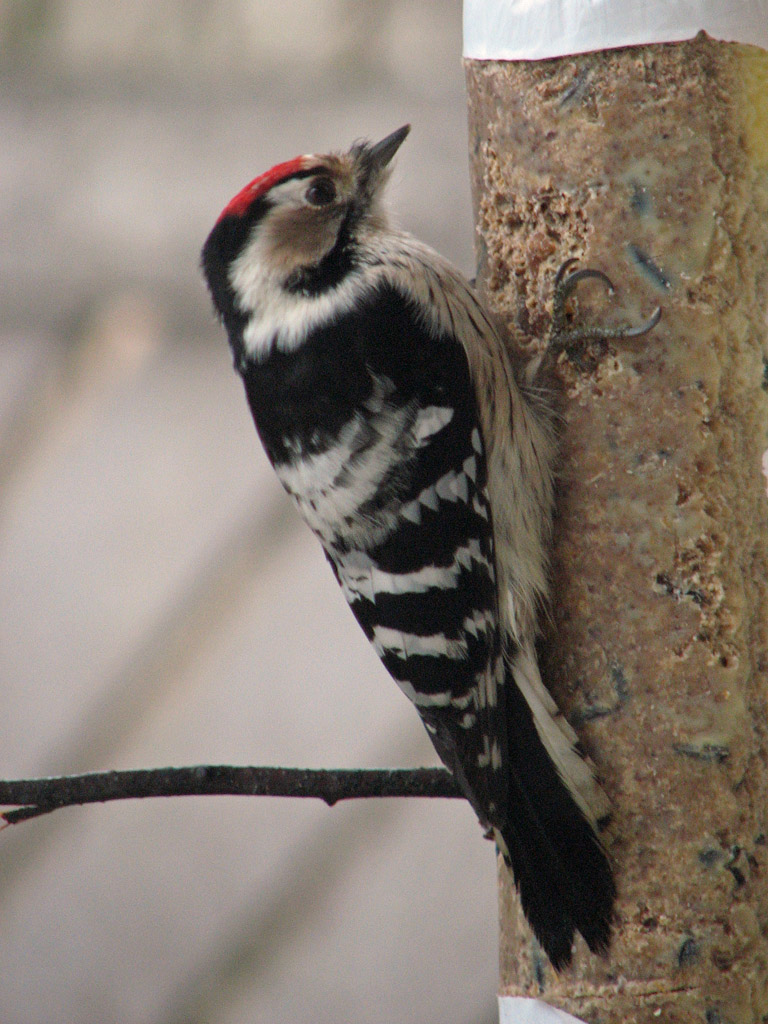
Garden Wildlife
Garden Wildlife


Tree-dwellers Woodpeckers and nuthatch
This is an artificial grouping of birds that are strongly associated with trees, and includes the woodpeckers, nuthatch and treecreeper. The woodpeckers have specially adapted feet with two toes pointing forward and one back, as an adaptation to climbing, and specially adapted cranial anatomy to protect the brain while they chisel or drum with their beaks.
In the UK there are three species of true woodpeckers (family Picinae). The rarest is the sparrow-sized lesser spotted woodpecker and this is unlikely to appear in a typical garden, but there is a photo below for comparison. The largest is the green woodpecker, which tends to live in open country like meadowland, grassland, or heath and as its name suggests it looks predominantly green. It might well turn up in your garden if you live near such areas. However the one most likely to visit gardens, in the top 20 of garden visitors in fact, is the great spotted woodpecker. There is one other species, the wryneck, which is closely related to the true woodpeckers and is a migrant occasionally seen in September on the south coast.
The bird superfamily Certhioidea, which is not related to the woodpeckers, has two species with similar tree-climbing habits. The nuthatch is quite often seen in gardens, while the treecreeper is rarely present - and even then hard to see because they scoot around the other side of the trunk when they see people.
Click on any of the top three pictures to go to the page for the species



Green woodpecker
Large, overall green, red head, often seen on the ground
Great spotted woodpecker
Blackbird sized, striking black and white with red rump
Nuthatch
Small grey above and orange-brown below. Black eye stripe.
14 cm
Similar but uncommon species
14 cm
16 cm
12 cm
Lesser spotted woodpecker
Dendrocopos minor
Like a much smaller great spotted woodpecker but no red rump and a red crown to the head instead
Wryneck
Jynx torquilla
Grey-brown, clings to trees like woodpecker but most often seen hunting ants on the ground. They can twist their heads through 180° hence the name
Treecreeper
Certhia familiaris
Small brown bird with downward curved beak, runs spirally up trees using its tail as a prop
Page written and compiled by Steve Head
Tree-dwellers Woodpeckers and nuthatch
This is an artificial grouping of birds that are strongly associated with trees, and includes the woodpeckers, nuthatch and treecreeper. The woodpeckers have specially adapted feet with two toes pointing forward and one back, as an adaptation to climbing, and specially adapted cranial anatomy to protect the brain while they chisel or drum with their beaks.
In the UK there are three species of true woodpeckers (family Picinae). The rarest is the sparrow-sized lesser spotted woodpecker and this is unlikely to appear in a typical garden, but there is a photo below for comparison. The largest is the green woodpecker, which tends to live in open country like meadowland, grassland, or heath and as its name suggests it looks predominantly green. It might well turn up in your garden if you live near such areas. However the one most likely to visit gardens, in the top 20 of garden visitors in fact, is the great spotted woodpecker. There is one other species, the wryneck, which is closely related to the true woodpeckers and is a migrant occasionally seen in September on the south coast.
The bird superfamily Certhioidea, which is not related to the woodpeckers, has two species with similar tree-climbing habits. The nuthatch is quite often seen in gardens, while the treecreeper is rarely present - and even then hard to see because they scoot around the other side of the trunk when they see people.
Click on any of the top three pictures to go to the page for the species
32 cm
22 cm
Green woodpecker
Large, overall green, red head, often seen on the ground
Great spotted woodpecker
Blackbird sized, striking black and white with red rump
Nuthatch
Small grey above and orange-brown below. Black eye stripe.
14 cm
22 cm
32 cm
Similar but uncommon species
Wryneck
Jynx torquilla
Grey-brown, clings to trees like woodpecker but most often seen hunting ants on the ground. They can twist their heads through 180° hence the name
Treecreeper
Certhia familiaris
Small brown bird with downward curved beak, runs spirally up trees using its tail as a prop
Lesser spotted woodpecker
Dendrocopos minor
Like a much smaller great spotted woodpecker but no red rump and a red crown to the head instead
14 cm
16 cm
12 cm
Page written and compiled by Steve Head

























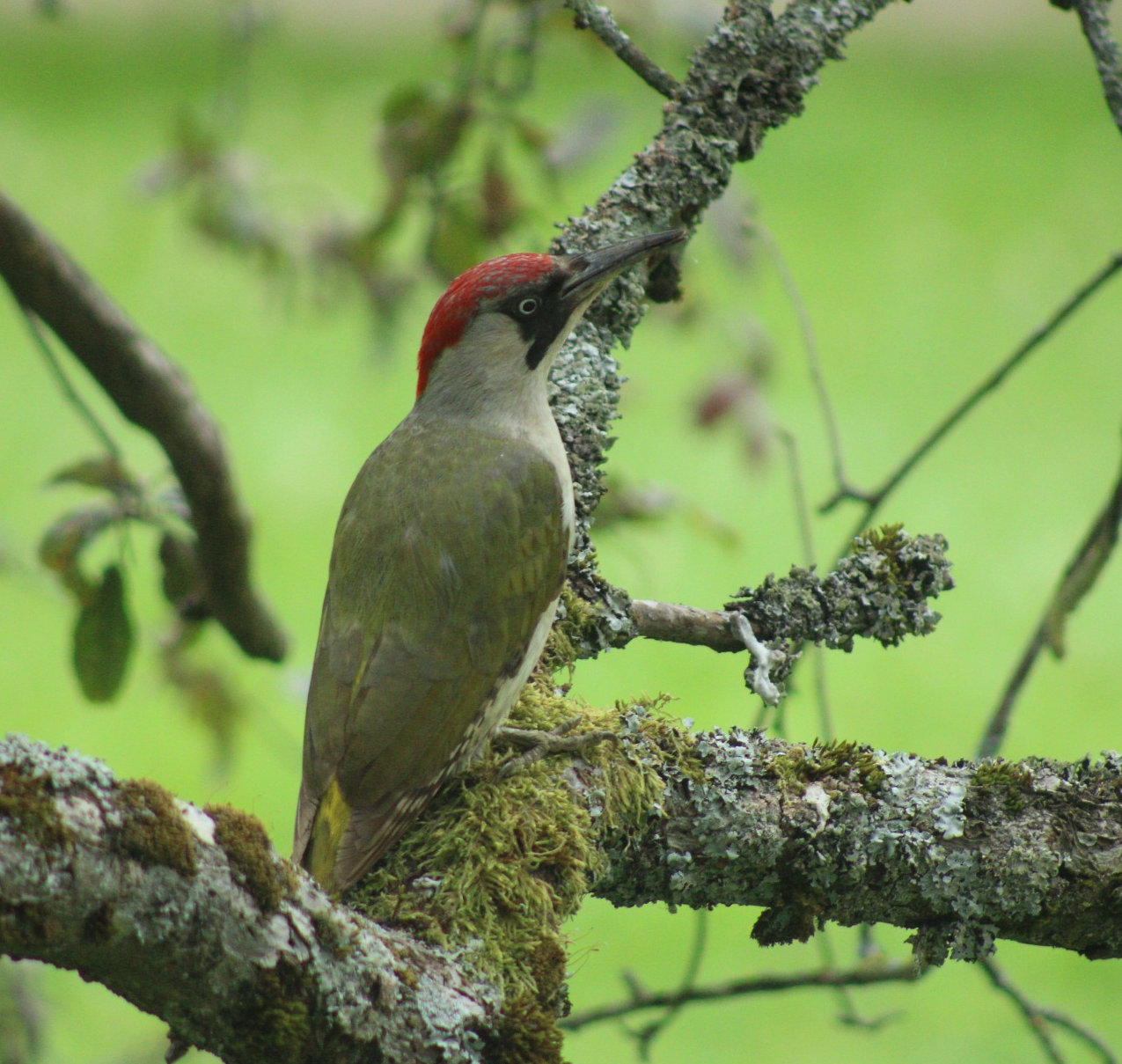
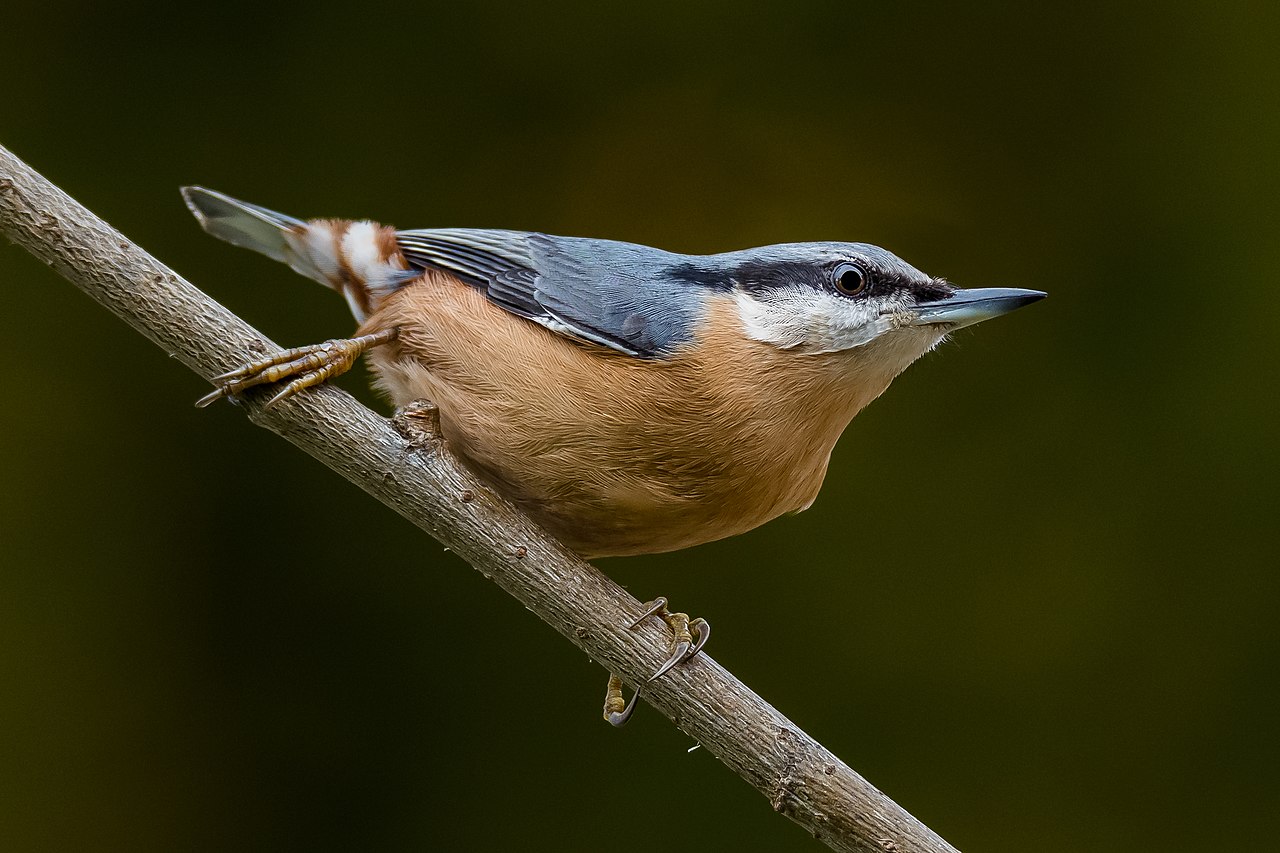
.jpg)